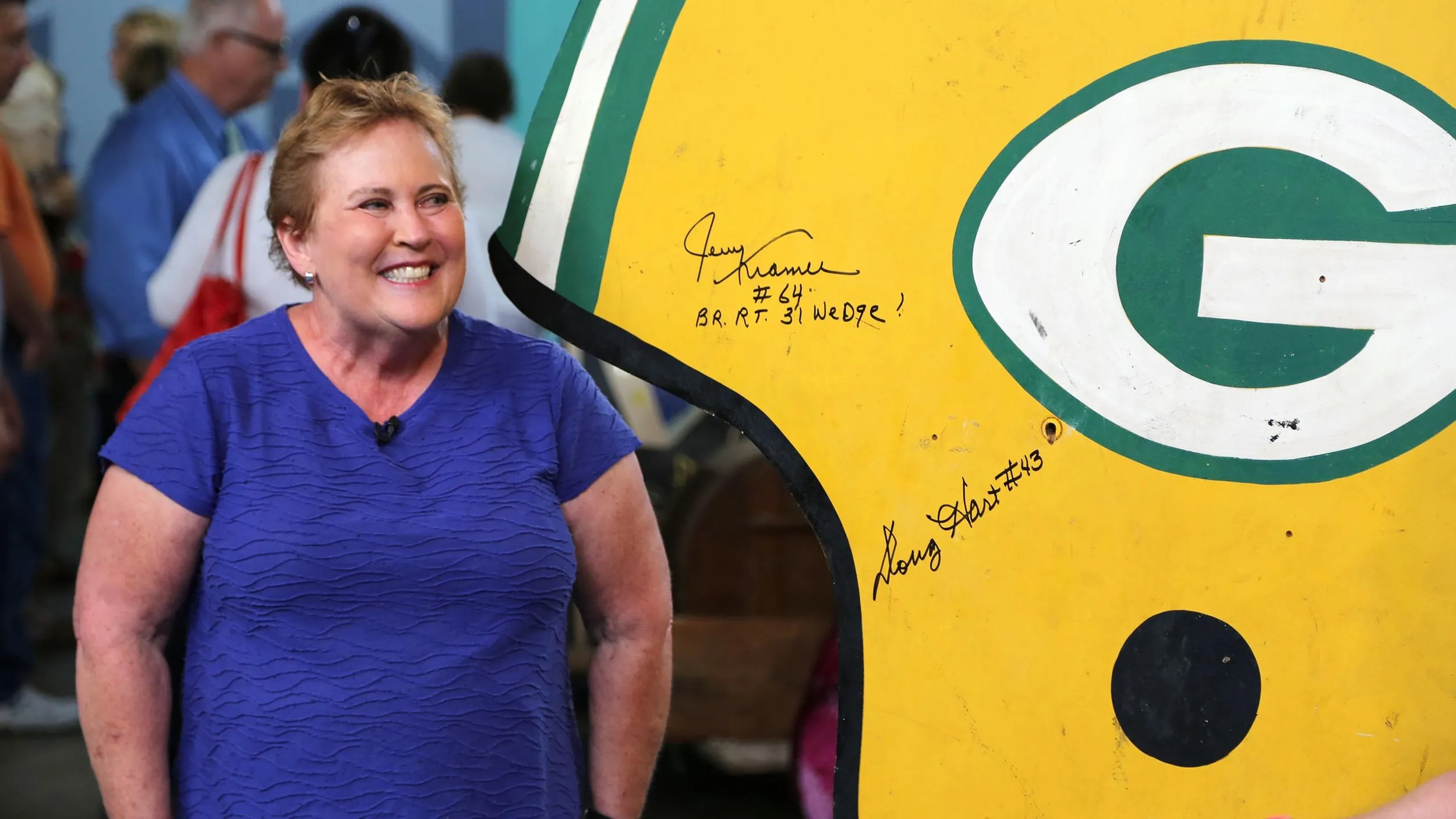GUEST: Well, this is a Pairpoint lamp that was brought into my family a long time ago. There are a couple of different stories as to how this lamp got into our family. Not really sure which one is true. But the first story is that it was brought by my great-grandparents who settled in Sheboygan, Wisconsin. And my grandparents, who took over their house, didn't really care for the lamp, and it was in their attic for decades until my mother found it, at which point my grandmother said, "If you like it, you can have it," and then it eventually worked its way to me. The other story, which I think is far more interesting, is that my grandfather was a commercial fisherman in Sheboygan, and was known to be a little bit of a gambler, and that he actually won this lamp playing poker out on the Great Lakes somewhere.
APPRAISER: Oh, great story-- you know it's a Pairpoint lamp.
GUEST: I know it's a Pairpoint lamp, but that's really all I know about it. I see a date on there from 1907, but that's really all I know.
APPRAISER: Well, Pairpoint started in New Bedford, Massachusetts. New Bedford, of course, very well-known as a whaling town. Herman Melville spent time there. They started in the 1880s, and then in the 1890s, early to mid-1890s, they merged with the Mount Washington Glass Company, so, and that became the Pairpoint Corporation. So here, we have... as you noted, there's a very small mark that says "Pairpoint Corporation," and it's dated 1907. So we know when it was made. This is what's referred to as a Pairpoint puffy lamp. The sides are puffy, actually, and they're floral.
GUEST: The shape of them...
APPRAISER: So this panel here, with the mark on it, is a wonderful garden scene with steps and urns. And then on the opposite side... let's see. Carefully turning this around. We have a very nicely dressed 18th-century courting couple, dancing couple. They're a very appealing look for a shade of this type. And then we have, on the sides and the top, floral and striated decoration that's just gorgeous. This is actually a very rare form of shade. I think it's called a Roma form, R-O-M-A. While the market for generic puffies is sort of slow right now, I think something for this level, the higher level, with all of the wonderful gilding and interior painting of it, I think the market is still very strong. Any idea, for you, what you have?
GUEST: You know, I did some research, minimal research. I did find some puffy... puffy Pairpoints, and based on what I saw, something around $1,000, $5,000. Anywhere in that range, but I really have no idea.
APPRAISER: Okay, actually, the more generic puffies used to be fairly high. This one, now, is again, is sort of more toward the top-of-the-line puffies. I would say is, basically, at full retail for insurance, you could say $15,000.
GUEST: Wow. And that even might be a little low. You could... I mean, you could really stretch it, if you wanted to, to $20,000. The money is in the shade. So if you have a crack or a big damage in the shade, it's really... the value goes-- just plummets.

